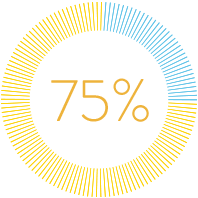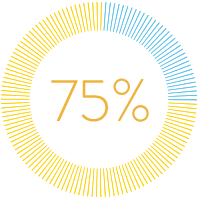Global Point of Care


透過過快速檢測結果改變心血管疾病的機率
快速 CVD 檢測可以改變患者管理的過程
心血管疾病 (CVD) 已成為世界上的主要死亡原因。1糖尿病患者罹患 CVD 的可能性是一般人的 2 至 3 倍。2但是,CVD 是可以在其發生之前預防的。
根據世界衛生組織 (WHO) 的資料,80% 因心臟病發作和中風的過早死亡可以透過戒菸、加強體能活動和採取健康飲食來避免。3早期評估、有效診斷和持續監測對於取得積極成果至關重要。
問題是,在醫療保健提供者能夠向患者推薦這些關鍵改變之前,他們首先必須能夠診斷和監測心血管疾病。檢測、治療和遵醫囑性是一切的關鍵。
我們需要牢記的心血管疾病危險因子
患者的危險因子越多,罹患心血管疾病的機率就越大。即使很少或沒有基本問題,仍然有 30% 的機率罹患 CVD。4,5心血管疾病的危險因子包括:
- 高血壓
- 高膽固醇
- 糖尿病
- 吸煙
- 缺乏身體活動
- 飲食不健康
- 過量飲酒
- 身體質量指數高
- 家族病史
- 種族背景
- 慢性腎臟疾病

大多數心血管疾病可以透過解決行為危險因子來預防。
心血管疾病帶來的全球影響



心血管疾病帶來的全球影響
17.9 M
2019 年經估計有 1,790 萬人死於心血管疾病,
佔全球死亡人數的 32%。1
85%
85% 的 CVD 死亡是由於心臟病發作和中風所引起。1
271 M TO 523 M
• 在 1990 年至 2019 年間,CVD 病例幾乎增加了一倍,從 2.71 億增加到 5.23 億。6
50%
男性和女性罹患 CVD 的終身風險超過 50%。4,5


瞭解快速診斷解決方案如何提供協助
在 2015 年,治療心血管疾病的全球總成本約為 9,570 億美元。截至 2030 年,此金額預計將增至 10,440 億美元。11,12
降低患者和全球健康系統的負擔取決於心血管疾病的管理介入措施,而這從檢測和監測開始。實驗室檢測雖然準確可靠,但也帶來了挑戰。您可能必須要求您的患者前往實驗室收集檢測地點進行一系列檢測。這並不代表他們一定會前往指定地點。
即使您可以在辦公室抽取實驗室樣本,通常也需要幾天才能得到結果。最終取得數值結果時,您需要追蹤患者,這需要花費您團隊額外的時間。
另一方面,快速診斷無需等待即可提供與實驗室相同品質的結果。透過定點照護檢測 (POCT),您可以在幾分鐘內採集樣本並取得結果。如果結果超出正常範圍,您可以在預約看診結束前採取行動,無論是教育患者改變生活方式還是開立藥物。沒有浪費時間。不會錯過緊急情況。而您的患者將獲得所需的一切。
可使用的產品
Abbott 製造各種快速診斷解決方案,其中有一個共同點:為您提供當下所需的信心,進而為您的患者灌輸終生的正向改變。
AFINION™ 血脂化驗
膽固醇濃度升高的患者罹患 CVD、心臟病和中風的風險也更高。無論您是檢測總膽固醇、LDL、HDL、三酸甘油酯或其他指標,Afinion Lipid Panel 和 Afinion™ 分析儀都能在幾分鐘內提供可靠的結果,因此您可以放心管理和監測患者。
參考資料
- World Health Organization. Cardiovascular diseases (CVDs). June 2021; accessed 3. April 2024: https://www.who.int/news-room/fact-sheets/detail/cardiovascular-diseases-(cvds)
- International Diabetes Federation. IDF Diabetes Atlas, 8th edn. 2017
- American College of Cardiology. Heart Attack Deaths Drop Over Past Two Decades. Feb 2023; accessed 3. April 2024: https://www.acc.org/About-ACC/Press-Releases/2023/02/22/21/30/Heart-Attack-Deaths-Drop-Over-Past-Two-Decades
- MedicalNewsToday. What to know about cardiovascular disease. Updated Nov. 29 2023; https://www.medicalnewstoday.com/articles/257484
- Wilkins JT, Ning H, Berry J et al. Lifetime Risk and Years Lived Free of Total Cardiovascular Disease. Jama 2012; 308(17):1795-1801
- Roth GA, Mensah GA, Johnson CO et al. Global Burden of Cardiovascular Diseases and Risk Factors, 1990–2019: Update From the GBD 2019 Study. JACC 2020;76(25); https://www.jacc.org/doi/epdf/10.1016/j.jacc.2020.11.010
- McGowan MP, Dehkordi SHH, Moriarty PM, Duell PB. Diagnosis and Treatment of Heterozygous Familial Hypercholesterolemia. J Am Heart Assoc. 2019;8:e013225. https://doi.org/10.1161/JAHA.119.013225
- 2019 ESC/EAS Guidelines for the management of dyslipidaemias. European Heart Journal 2019
- Centers for Disease Control and Prevention (CDC). Familial Hypercholesterolemia; accessed 4. April 2024: https://www.cdc.gov/genomics/disease/fh/FH.htm
- Norhayati MN, Masseni AA, Azlina I. Patient satisfaction with doctor-patient interaction and its association with modifiable cardiovascular risk factors among moderately-high risk patients in primary healthcare. PeerJ 2017;5:e2983; https://doi.org/10.7717/peerj.2983
- World Heart Federation. Why Circulatory Diseases Matter. Accessed 4. April 2024: https://world-heart-federation.org/wp-content/uploads/2021/04/Infographic-Why-Circulatory-Health-Matters.pdf
- Chen Z, Lee M, Redfern J et al. The Cost-Effectiveness of Digital Health Interventions on the Management of Cardiovascular Diseases_Systematic Review. J Med Internet Res 2019 Jun; 21(6): e13166; 10.2196/13166: https://doi.org/10.2196/13166












